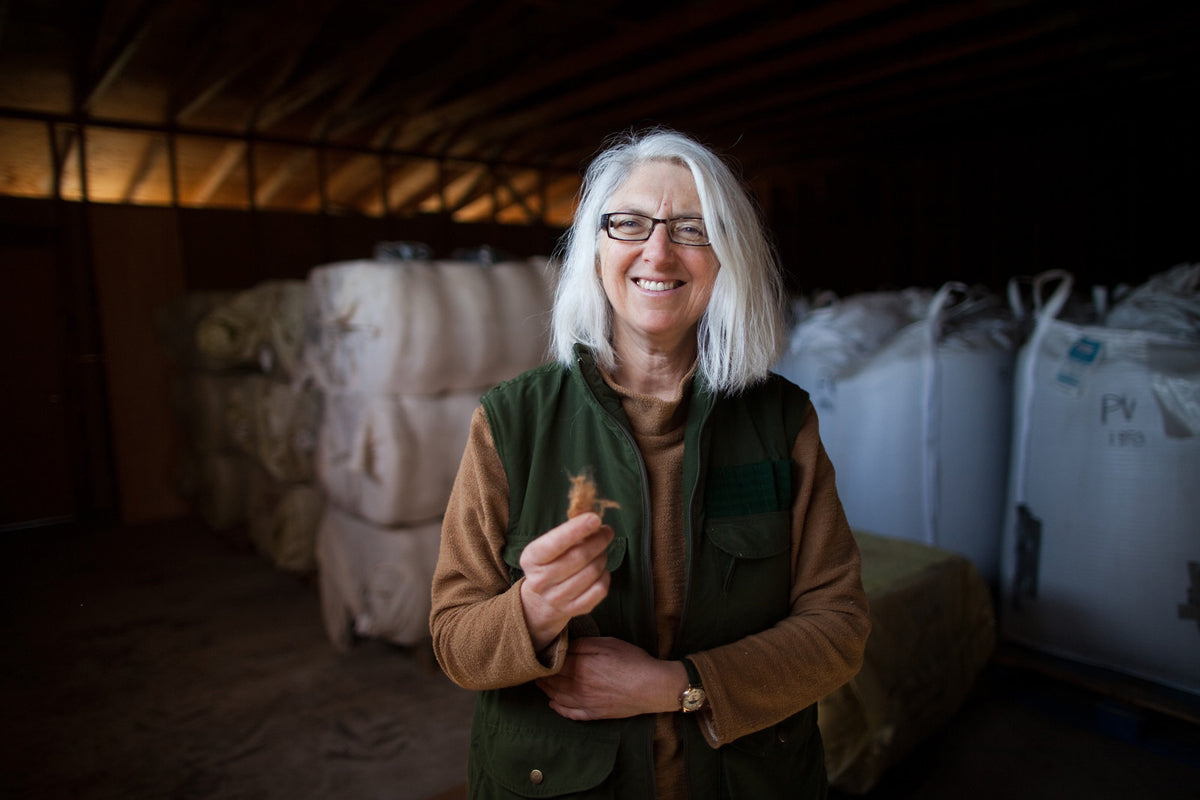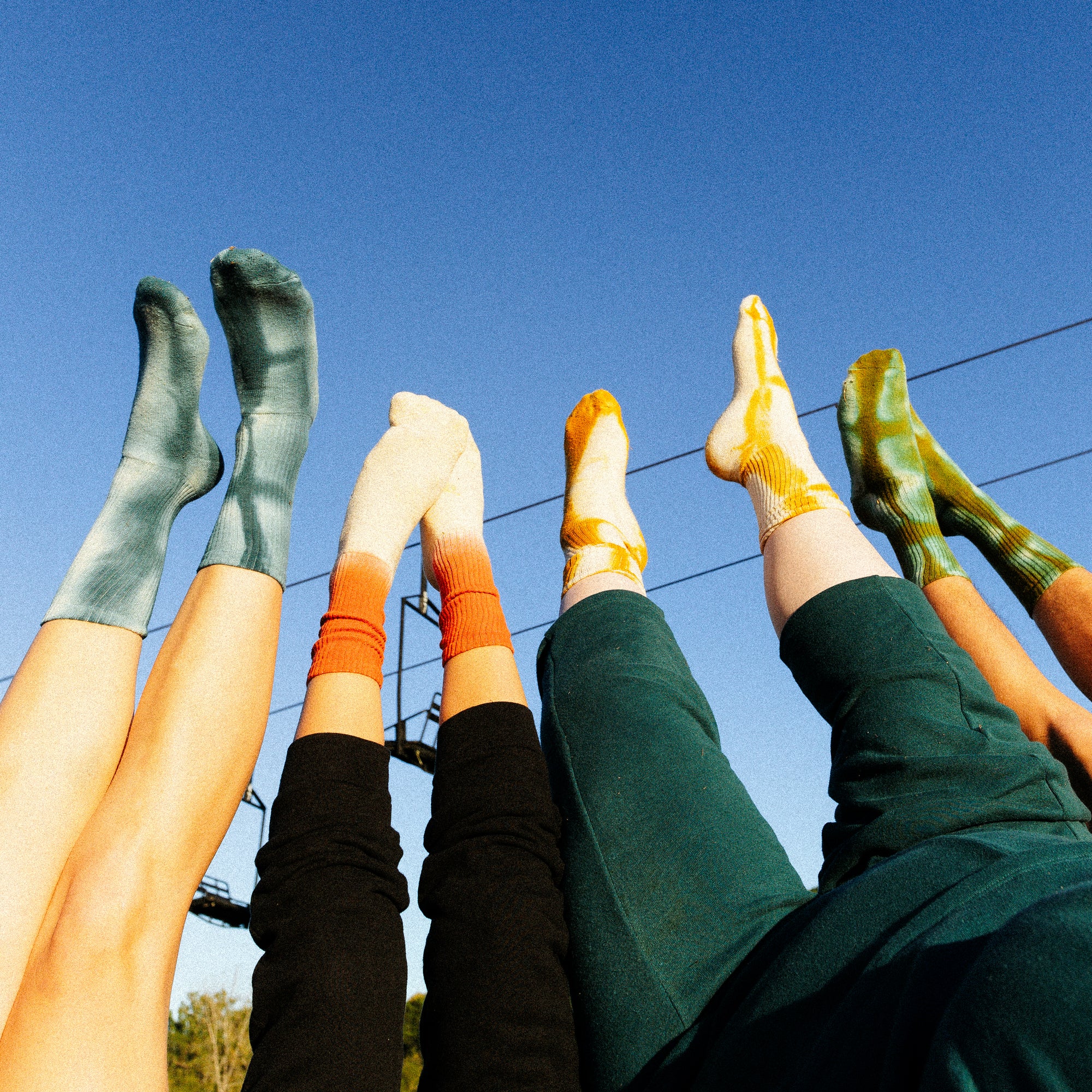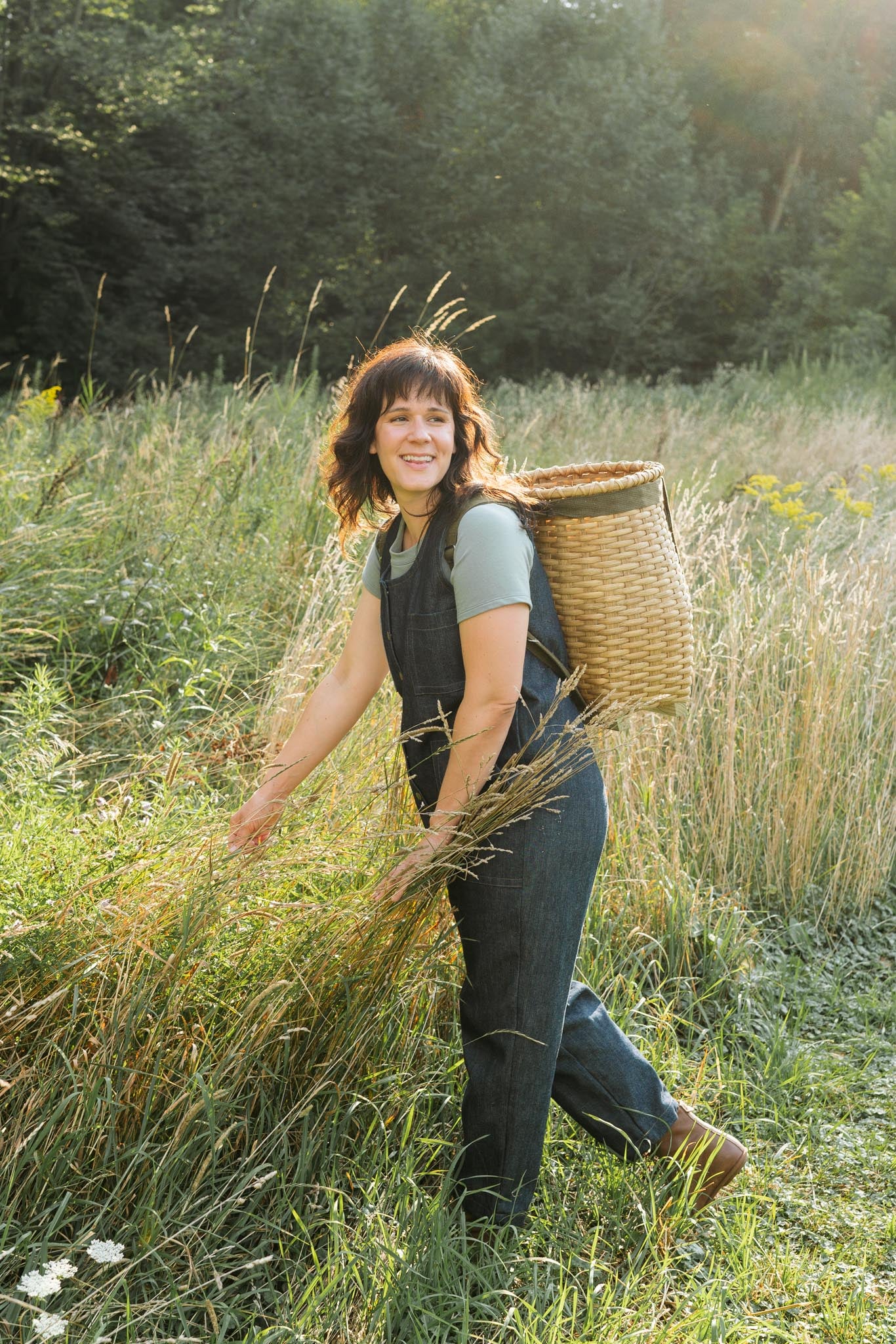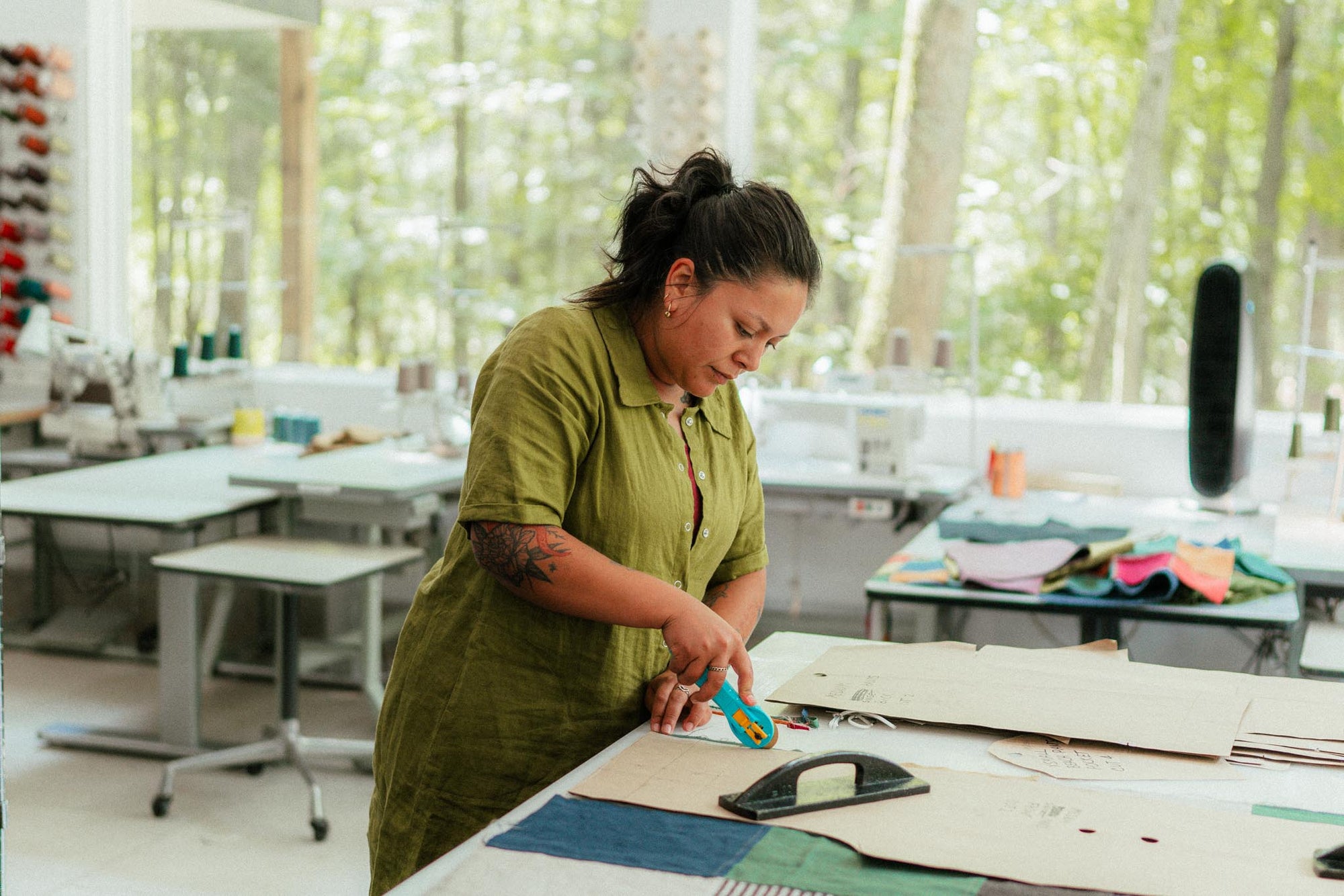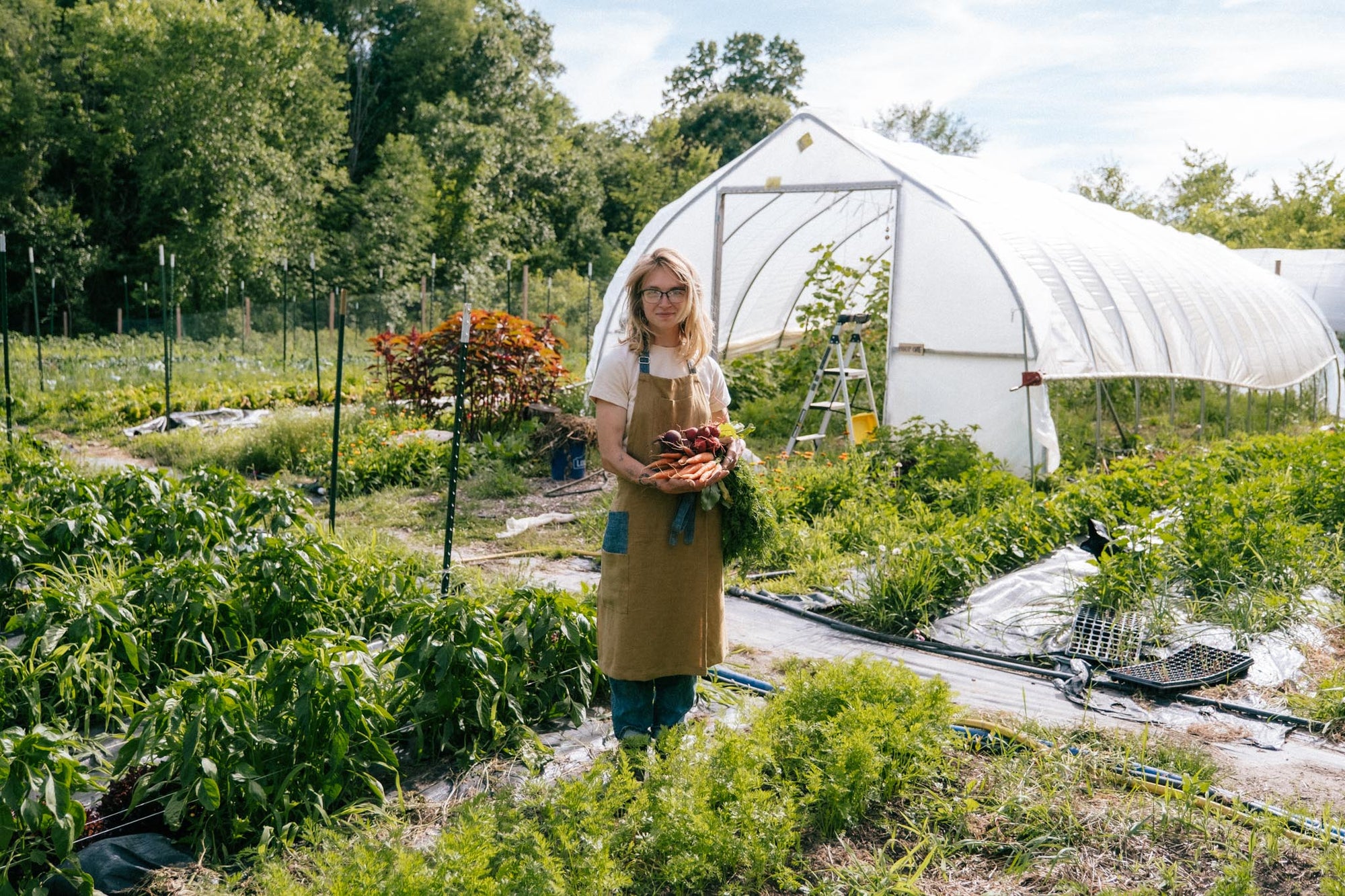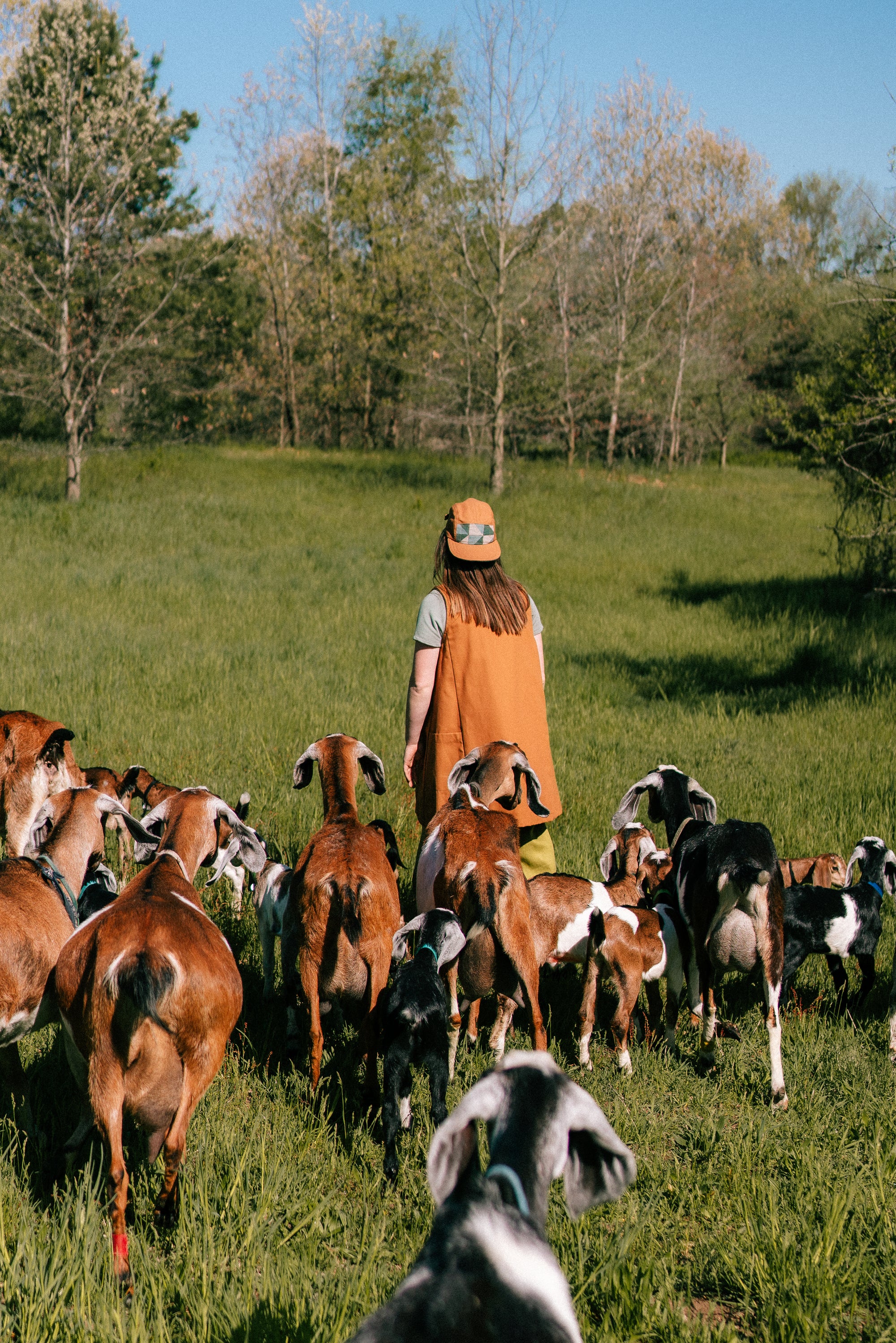
Photo by Paige Green Photography, shared with permission.
In honor of our Foxfibre® Colorganic® Collection, we wanted to take a moment to highlight the incredible woman behind it. Doug and Sally met while speaking on a panel about Organic Cotton last Fall. Her story and journey deeply resonated with us, and our team has been excited about supporting her work ever since.
What inspired you to start working with + growing color varieties of cotton?
"Inspired to study Entomology by my high school Biology teacher, Dr. Elizabeth Wangari, who was working on her PhD at Stanford University (the second woman from Kenya to earn a doctorate degree), I dropped my big plan to be a custom hand spinner for a living. The idea was that if you were going to reduce or eliminated pesticide misuse, you better have something safer, yet reliable, to replace them with. She arranged an internship for me at Zoecon and inspired me to go to college.
Working my way through Cal Poly, San Luis Obispo, one of my jobs was teaching hand spinning to this wonderful older student Dorothea, whose daughter had been seriously injured dyeing textiles without gloves. Rendering her brain damaged beyond repair. I turned my focus to dyes and found that they were produced by the same companies that made pesticides. While working for a plant breeder evaluating his nematode resistant cotton lines in 1982 I stumbled upon a bag in his greenhouse drawer. Within it was this lovely mix of tans and brown fibered cottons!
These cottons in the little bag had been given to all the breeders by the USDA as a source of innate pest and disease resistance. But none of the breeders wanted to deal with the color. I asked my boss why we did not improve the fiber (it felt rough, short and weak to me). He replied that there was no market for colored cottons. I asked why don’t we make a market for it? He was in his 70’s and I was in my 20’s. He said “why don’t you make a market for it?” and that is how it began."
What's your favorite shade of cotton to grow and why? Most unique?
"I love them all….I love the burnt sienna colors the most on the plant out in the field, and I love the green colors when picking them as the color is revealed after spinning and boiling."

What's a day in your life like as a cotton breeder?
"This year, since I overextended myself financially last year, it is just shipping orders and trying to keep abreast of the loan payments that I took out to fund last year’s research. I fund everything by selling products. From the bales of raw cotton to the mill in Japan (that spun the yarn for the “Ombre Plaid”) to carded cotton to the mill in the US that spun the yarn used to knit the “Electra jacquard jersey”.
When I do have the money to put a breeding nursery in it is very busy with preparing to plant all the hundreds of little plots (Feb), then irrigating them and keeping them weeded- massive massive jobs actually (March- July). Then the breeding season- when I make the cross pollinations (July, August September), and then roguing which involves pulling the wrong plants out of seed increase plots (September/October/November). Then making the individual plant selections and getting them picked (November December). Then ginning and analyzing the selected plants to chose which to go forward with the next year (Jan, Feb. March).
Plant breeding is serious work and most people really don’t know much about it. I find it heartbreaking that my program is only supported by me selling the products of the cotton. I see all these big fashion foundations giving so much money to projects….but not one of them seem to think that naturally colored cottons are viable."
What do you hope to leave as your legacy?
"People treasuring and using the natural colors of all of the natural fibers to reduce dye wastes."

Tell us more about the milling process in Japan. What led you to them?
"They have been my customer- buying the bales of cotton that we produce - since 2002. Before they were my customer, another spinning mill in Japan was the very first customer- the one who actually initiated all the organic cotton production in the US and possibly the world in the late 1980’s."
How long does it take from growing the cotton to finished yardage/product?
"Soonest a few years- some - like this fabric- 30 years"
Designed by a friend, Sally had hung onto her art for decades before she was able to see it come to life in the form of fabric. She now sells it on her website as a baby blanket as a thanks for donations to her breeding program.

To support Sally's work, follow her at @vreseis or check out her website.

